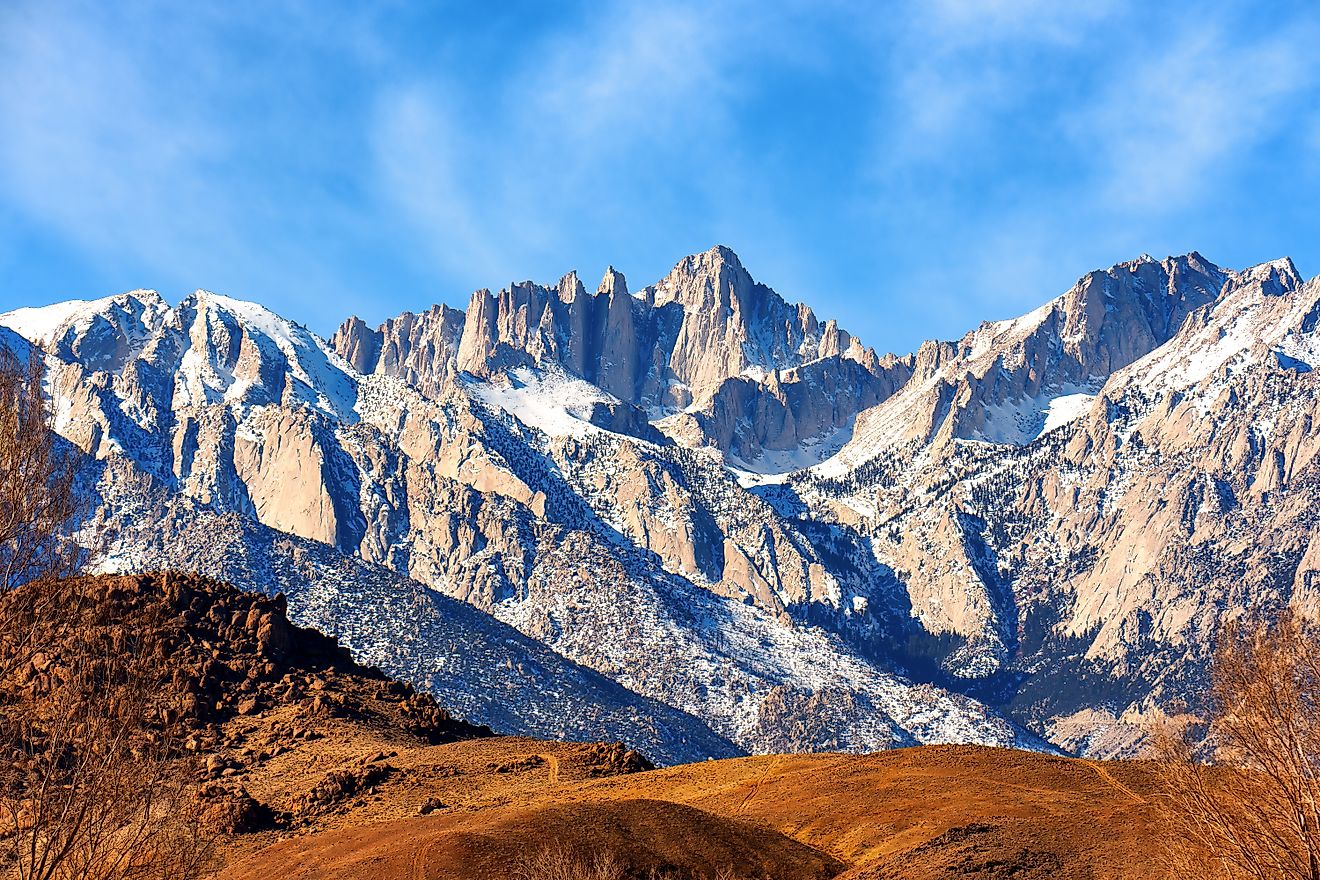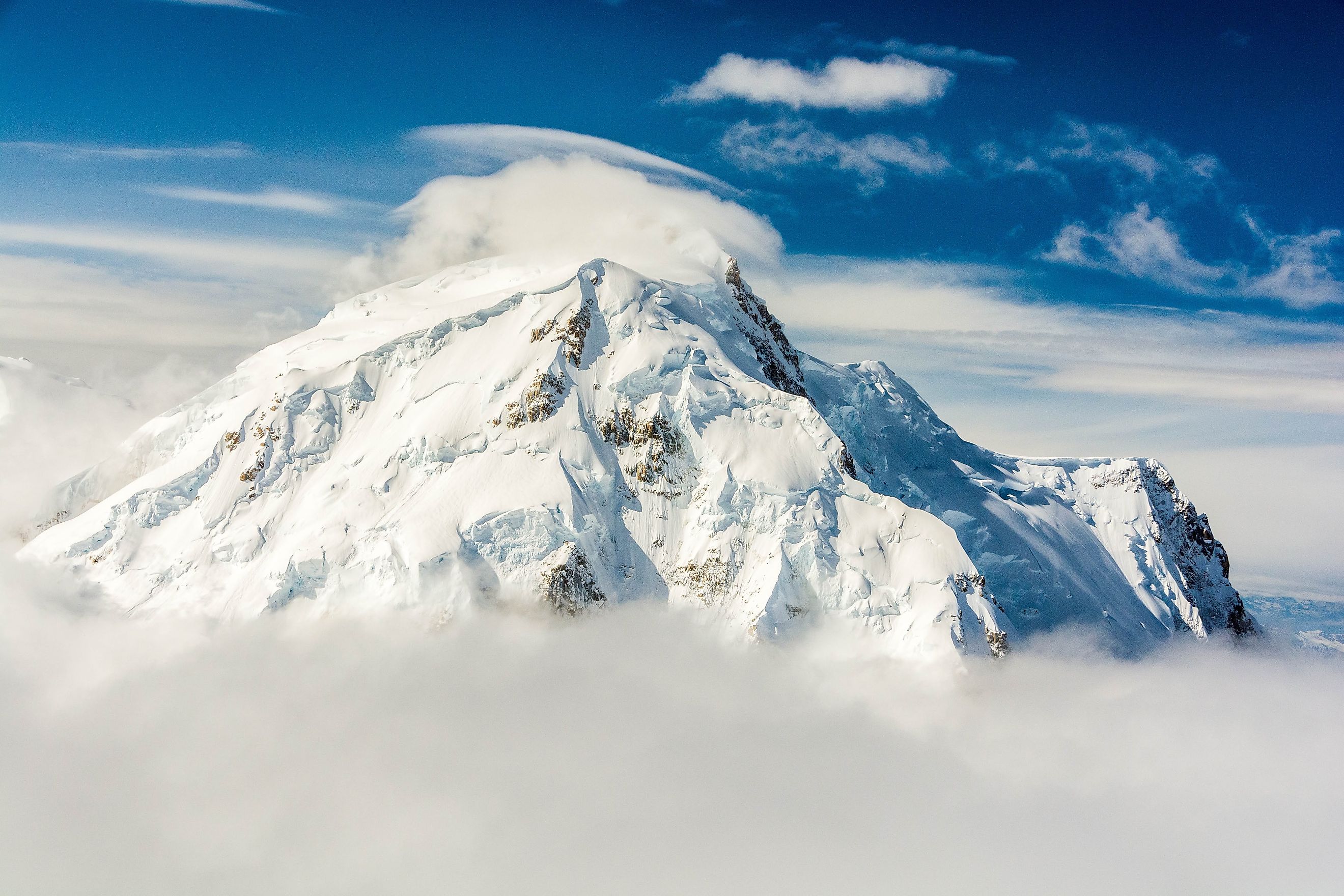
Mount Foraker
Rising to a height of 17,400 feet in the heart of Denali National Park, Mount Foraker is one of North America's most majestic and least understood peaks. Although it sits only 14 miles southwest of Denali, the tallest mountain in North America, Foraker often flies under the radar. Yet its sheer size, remote beauty, and storied history make it one of the most captivating mountains in the United States.
A Towering Peak in the Alaska Range
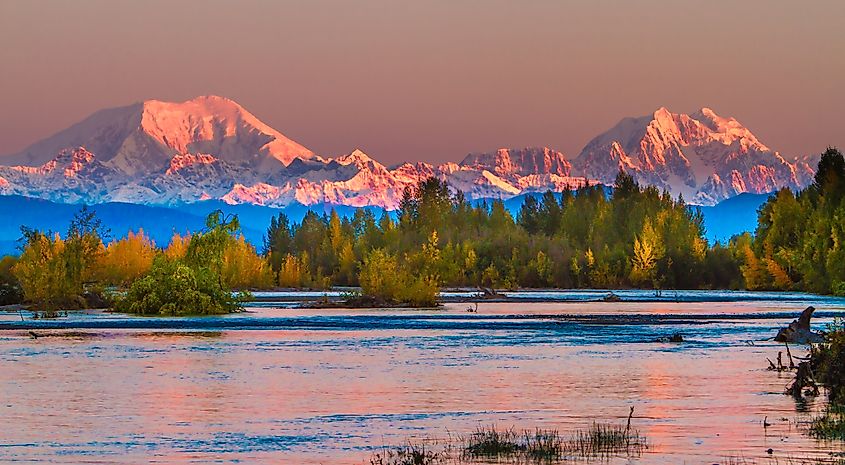
Mount Foraker is the third-highest peak in the United States and the second-highest in the Alaska Range, topped only by Denali itself. It dominates the western horizon of Denali Base Camp, looming above the southeast fork of the Kahiltna Glacier. Alongside neighboring Mount Hunter and Mount Crosson, Foraker helps define the dramatic alpine skyline that has drawn climbers and photographers to central Alaska for over a century.
Despite its impressive stature, Foraker has a quieter reputation than Denali. That may be due in part to its proximity to such an iconic mountain, but Foraker is a formidable peak in its own right. Its steep ridges and expansive glaciated faces pose a serious challenge to alpinists, and its remote location in one of the wildest corners of North America adds an element of logistical difficulty.
A Climb Through History
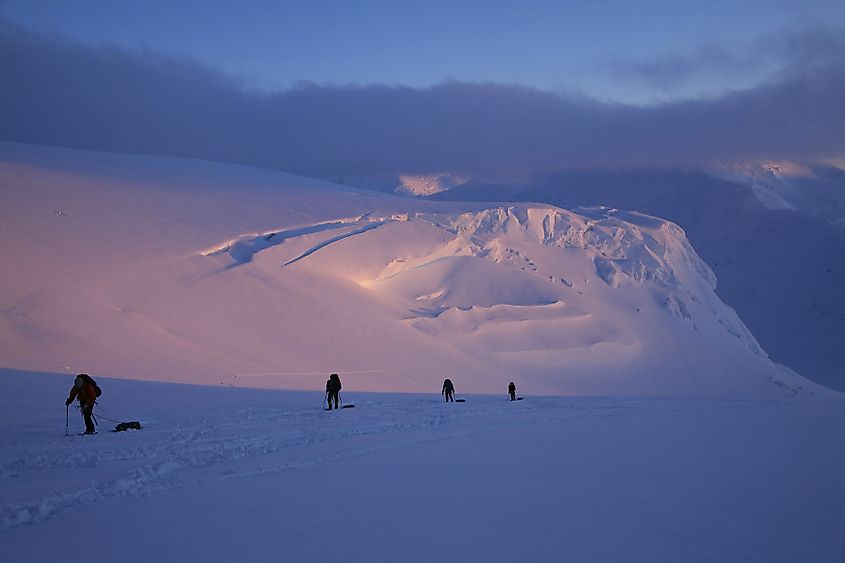
The first ascent of Mount Foraker’s North Peak was completed on August 6, 1934, by Charles Houston, T. Graham Brown, and Chychele Waterston. Just four days later, the same team summited the higher South Peak via the West Ridge. These pioneering climbs remain legendary in American mountaineering, not only for their technical difficulty but also for the bold style in which they were executed.
The route taken in 1934 is still considered one of the classic climbs in the Alaska Range. Today, many modern expeditions approach Foraker from the southeast, beginning their journey by flying out of Talkeetna, Alaska. Climbers are dropped off at Denali Base Camp, located on the southeast fork of the Kahiltna Glacier. From there, they cross the Kahiltna and ascend the southeast face of Mount Crosson before continuing along Crosson Ridge to reach Foraker’s flanks.
The route is long, cold, and remote. Severe weather, avalanche risk, and glacier travel all pose hazards. Because of these challenges, Mount Foraker sees far fewer attempts than Denali, which has more established infrastructure and support systems for climbers.
A Mountain with Many Names
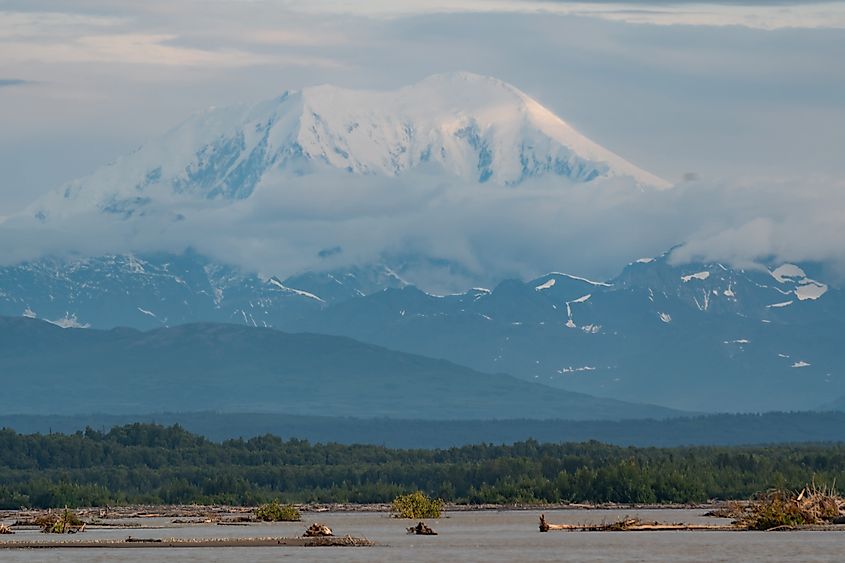
Long before it was known as Mount Foraker, this mountain had names in the languages of the Alaska Native peoples who lived in the region for thousands of years.
The Koyukon people of the Lake Minchumina area called the mountain Sultana, meaning “the woman,” and also Menlale, which translates to “Denali’s wife.” The Dena’ina Athabascans of the Susitna River valley referred to it as Be’u, also meaning “his wife (Denali).” These names reflect the close physical and symbolic relationship between Foraker and Denali. From the right vantage point, the mountains appear to face one another across a vast glacial basin, a geographic pairing that inspired stories and spiritual meaning in Native traditions.
When Russian explorers mapped the area, they grouped both peaks under the shared name Bolshaya Gora, or “big mountain.” Later, in 1899, Lieutenant J.S. Herron of the US Army officially named the peak Mount Foraker after Joseph B. Foraker, a US Senator from Ohio who served from 1897 to 1909.
The naming reflects the era of American expansion and exploration in Alaska, when many peaks were given names honoring political figures. However, the indigenous names continue to resonate, especially among those seeking a deeper understanding of the cultural and natural history of the Alaska Range.
A Glacier-Carved Landscape

Mount Foraker anchors the head of the Foraker Glacier, a sprawling river of ice that flows from the mountain’s flanks. This glacier is part of a complex network that includes the nearby Kahiltna Glacier and contributes to the wild, frozen terrain that defines much of Denali National Park.
The mountain itself is flanked by steep icefalls, sheer granite walls, and heavily crevassed glaciers. These features make it a highly technical climb, even by Alaska standards. The mountain’s remoteness also means that rescues are difficult, and climbers must be fully self-sufficient.
For those not seeking to summit, Foraker can still be appreciated from the air or from lower elevation trekking routes. Flightseeing tours out of Talkeetna offer stunning views of the mountain’s broad snowfields and dramatic ridges. On clear days, its pyramid-like form appears prominently alongside Denali, especially from vantage points along the Parks Highway and within parts of Denali National Park’s backcountry.
Mount Foraker vs Denali
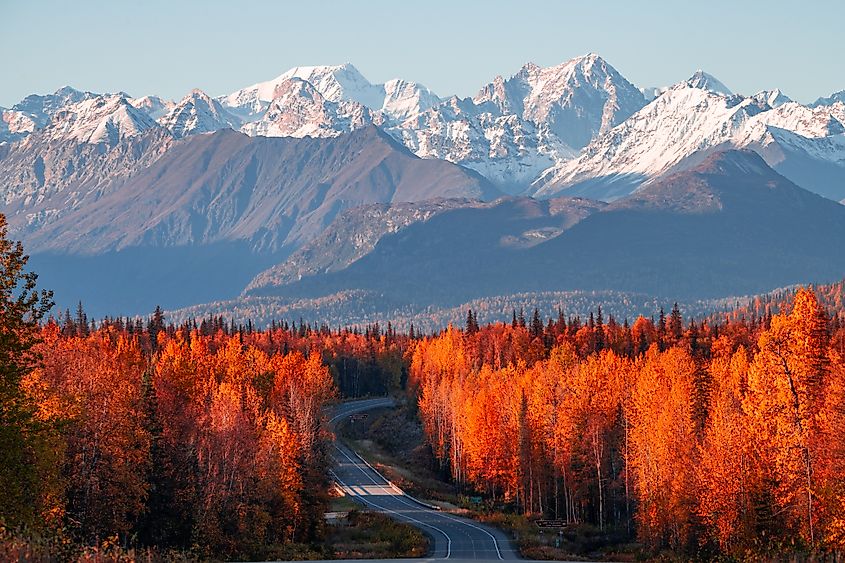
While Denali draws the bulk of attention as the tallest mountain in North America, many seasoned mountaineers view Foraker as the more isolated and committing climb. It does not have the same guide services, prepared base camps, or regular weather reporting, making any expedition more complex.
In fact, the number of successful ascents each year is typically only a small fraction of those recorded on Denali. The level of difficulty is compounded by the fact that Foraker sits in the middle of a glacier-filled wilderness that offers no easy exit in the case of a storm or emergency. For those who reach the summit, the experience is one of profound solitude and accomplishment.
Visiting the Area

You do not have to be a climber to appreciate Mount Foraker. Talkeetna, a small town about 100 miles north of Anchorage, is the primary jumping-off point for both scenic flights and climbing expeditions. The town retains its rustic charm and serves as a base for adventurers heading into the Alaska Range.
From Talkeetna, flightseeing tours offer views of the Denali massif, including Denali, Mount Hunter, and Mount Foraker. These aerial trips provide some of the best ways to view the massive scale of the mountains and the braided glacier valleys below. Some tours even land on the Kahiltna Glacier, allowing visitors to briefly stand on the ice sheet that climbers use as their starting point.
For those who want to stay on the ground, Denali National Park has a limited but well-maintained road system and multiple backcountry hiking zones. While Foraker is not visible from every viewpoint in the park, rangers and outfitters can help direct visitors to areas with clearer views of the western side of the range.
Fast Facts: Mount Foraker
-
Elevation: 17,400 feet (5,304 meters)
-
Location: Denali National Park, Alaska
-
Distance from Denali: 14 miles southwest
-
First Ascent: South Peak on August 10, 1934, by Houston, Brown, and Waterston
-
Primary Access Point: Talkeetna, Alaska via air taxi to Kahiltna Glacier
-
Climbing Season: May to early July
-
Native Names: Sultana (the woman), Menlale (Denali’s wife), Be’u (his wife)
